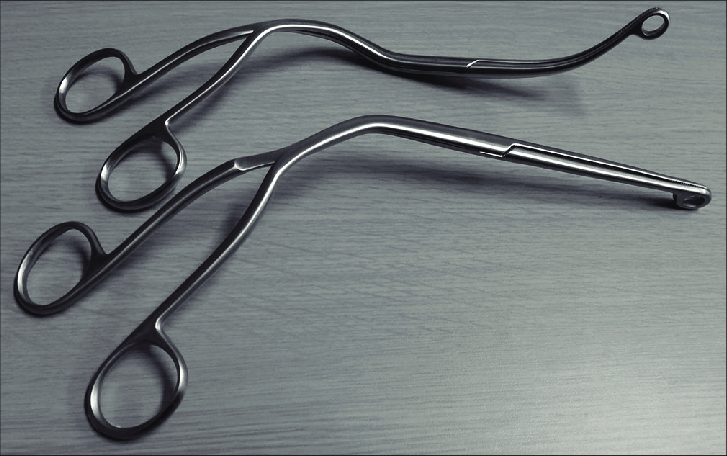In the realm of medical instruments, Magill Forceps stand out as indispensable tools, providing precision and control in critical procedures. From airway management to foreign body removal, the versatility of Magill Forceps has become a cornerstone in various medical disciplines.
The Genesis of Magill Forceps
Magill Forceps, named after the Irish anesthetist Ivan Magill, were developed in the early 20th century. Magill envisioned a tool that would enhance the control and safety of airway management during anesthesia administration, ultimately leading to the creation of these forceps.
Types of Magill Forceps
Magill Forceps come in different types, each tailored to specific medical scenarios. The standard Magill Forceps, pediatric Magill Forceps, and extended reach Magill Forceps offer a spectrum of options for medical professionals.
3.1 Standard Magill Forceps
Standard Magill Forceps are the go-to choice for general airway management and intubation procedures. Their ergonomic design and ease of use make them a staple in medical facilities worldwide.
3.2 Pediatric Magill Forceps
Designed with the delicate needs of pediatric patients in mind, these forceps ensure precision in procedures involving children. The reduced size and gentler grip make them essential in pediatric medicine.
3.3 Extended Reach Magill Forceps
For situations that demand a more extended reach, such as deep airway interventions, extended reach Magill Forceps provide the necessary flexibility and control.
Anatomy and Design
Understanding the anatomy of Magill Forceps is crucial for their effective use.
4.1 Handle
The handle of Magill Forceps provides a comfortable grip for medical professionals, allowing for precise maneuvers during procedures.
4.2 Shaft
The shaft, extending from the handle, offers the necessary length to reach target areas within the airway.
4.3 Jaws
The jaws of Magill Forceps, often serrated for better grip, play a pivotal role in grasping and maneuvering objects within the airway.
Applications in Medical Procedures
Magill Forceps find applications in various medical procedures, showcasing their versatility.
5.1 Airway Management
One of the primary applications is in airway management, facilitating the insertion of endotracheal tubes with accuracy.
5.2 Foreign Body Removal
Magill Forceps excel in removing foreign bodies from the airway, ensuring prompt resolution of potentially life-threatening situations.
5.3 Endotracheal Intubation
In endotracheal intubation, Magill Forceps provide a controlled approach, minimizing the risk of complications.
How to Use Magill Forceps
Proper usage of Magill Forceps is vital for successful outcomes in medical procedures.
6.1 Preparing for Use
Before employing Magill Forceps, proper inspection, and preparation are essential, ensuring their functionality and cleanliness.
6.2 Proper Handling Techniques
Medical professionals must adhere to specific handling techniques, considering the patient’s condition and the nature of the procedure.
Magill Forceps vs. Other Medical Instruments
Comparing Magill Forceps with alternative instruments sheds light on their unique advantages.
7.1 Comparison with Tweezers
Unlike tweezers, Magill Forceps offer a more specialized and controlled grip, particularly in the context of airway management.
7.2 Contrasting with Hemostats
While hemostats serve different purposes, Magill Forceps excel in procedures where precise control and manipulation of objects within the airway are paramount.
Training and Certification for Medical Professionals
Proper training and certification ensure that medical professionals effectively utilize Magill Forceps in various scenarios.
Ensuring Sterilization and Maintenance
Maintaining the sterility of Magill Forceps is crucial for preventing infections and complications.
9.1 Sterilization Techniques
Following recommended sterilization techniques guarantees the elimination of pathogens and ensures the safety of patients.
9.2 Maintenance Practices
Regular maintenance, including proper lubrication and inspection, extends the lifespan of Magill Forceps.
Innovations in Magill Forceps Technology
The evolution of Magill Forceps technology introduces advancements that enhance their functionality.
10.1 Integration of Robotics
Robotic integration aims to improve precision and control, especially in complex medical procedures.
10.2 Materials Advancements
Utilizing advanced materials enhances the durability and effectiveness of Magill Forceps.
The Significance of Magill Forceps in Emergency Situations
Magill Forceps play a pivotal role in emergency medical situations, where swift and precise action is paramount.
Challenges and Limitations
Acknowledging the challenges and limitations of Magill Forceps encourages ongoing refinement and innovation.
Future Prospects and Research Areas
Continued research holds the key to unlocking further potential in Magill Forceps technology, addressing current limitations and expanding their applications.
Real-Life Cases: Success Stories with Magill Forceps
Examining real-life cases showcases the positive impact of Magill Forceps in diverse medical scenarios.
Conclusion
Magill Forceps stand as a testament to the constant evolution of medical instruments. Their precision, versatility, and impact on patient outcomes make them invaluable tools for medical professionals across specialties.
FAQs
- Are Magill Forceps only used in anesthesia procedures?
- No, Magill Forceps find applications in various medical procedures, including airway management, foreign body removal, and endotracheal intubation.
- How often should Magill Forceps be sterilized?
- Magill Forceps should be sterilized before each use to ensure patient safety and prevent infections.
- Can Magill Forceps be used on pediatric patients?
- Yes, there are pediatric Magill Forceps designed specifically for use in children.
- What are the common challenges faced with Magill Forceps?
- Challenges may include difficulty reaching certain areas in the airway and the need for proper training to use them effectively.
- Are there any alternatives to Magill Forceps for airway management?
- While there are alternatives, Magill Forceps remain a preferred choice for precise control in airway procedures.

